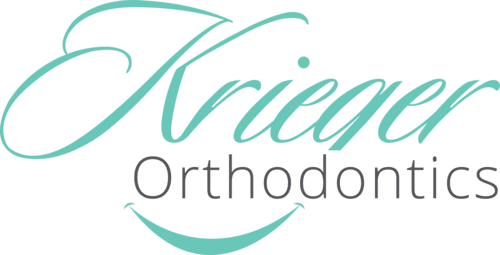After your child completes his or her orthodontic evaluation with us at Krieger Orthodontics, you might hear us mention “two-phase treatment.” It may sound a bit daunting if you have never heard this term before. Thankfully, it’s a lot less intricate than it sounds.
Two-phase treatment is merely an orthodontic process that is delivered in two stages. The first stage is focused on tooth straightening and the second is physical, facial changes. It enables us to give patients a healthy, functional, and attractive result that endures for years to come.
Phase I is called interceptive orthodontic treatment. This stage intercepts orthodontic issues in their preliminary stages to stop them from becoming severe problems later. Treatment usually takes place around 8-9 years old when the permanent front teeth are erupting. We recommend interceptive treatment when postponement can cause severe orthodontic difficulties or worsen the social impact a child may experience by having crooked or misaligned teeth and jaws.
Phase II is put into motion only after all permanent teeth have erupted. Phase Two is administered to improve teeth alignment, which cannot be done when baby teeth are still present.
What we want to make clear is two-phase treatment is not is a tricky way to get you into two sets of braces. It doesn’t take twice the time or cost twice the money. We actually try to avoid two-phase treatment. However, some cases do require two-phase treatment to achieve lasting results.
Still a little confused by two-phase treatment? Not sure what it really entails? Let’s dive a little deeper to help you understand.
Phase I orthodontic treatment
Phase I orthodontic treatment is usually the first of two phases of treatment. If a young patient requires intervention before starting regular orthodontic treatment, they will go through two different treatment phases. Phase I can include things like partial braces, orthodontic appliances, and retainer-like devices. They are used to correct current issues, prevent future problems, and help to adjust a child’s growth and dental development.
As this interceptive treatment happens between the ages of 6-10 years, the younger patients will generally still have baby teeth as well as their permanent teeth at the time of treatment. Recommended sparingly, Phase I treatment is used if there is a dental development problem or dental and jaw development issues which would become worse if left untreated. Though many children will not need treatment this early on, Krieger Orthodontics, as well as the American Association of Orthodontists recommends that children undergo their first orthodontic evaluation by the time they turn seven. Having an early consultation with a friendly, experienced orthodontist like Dr. Krieger is the first step in guaranteeing your child’s growth and dental development are the very best they can be.
Phase I corrects a great many dental issues like tooth alignment, jaw development, gum or periodontal health, and crowding and spacing issues. Orthodontists will recommend Phase I treatment for common reasons such as:
- dental crossbites
- skeletal crossbites
- underbites
- excessively overlapping or deep bites
- open bites (where the teeth in the front do not contact or overlap)
- jaw growth or jaws that are not in proportion to each other
- severely protruding teeth
- the presence of problematic oral habits, such as extended thumb-sucking, bottle, or pacifier use
- clefts
- severe crowding or spacing of the teeth
Not always necessary, often an additional phase of treatment will need to follow Phase I. As Phase I provides early intervention, Phase II isn’t normally as long as the first treatment. When you treat an issue early, severe problems can often be reduced to much simpler issues that can be treated later with braces or other orthodontic devices.
The resting period
At the conclusion of the first phase of treatment, teeth will not be in their final positions as that will happen in the second phase of treatment. Between the two phases, we take a period of rest to allow all remaining permanent teeth to come in.
Phase II orthodontic treatment
Most people are somewhat familiar with the types of orthodontic treatments that take place in Phase II after interceptive treatment. Often it involves placing braces on upper and lower teeth after all the permanent teeth have arrived. Not all tooth and bite-related issues can be addressed and fixed in Phase I, so a skilled orthodontist like Dr. Krieger will use braces to straighten the permanent teeth and correctly align the jaw into a proper bite.
In the second phase, we are making sure each tooth has an exact, optimal location in the mouth where it can live peaceably with the lips, cheeks, tongue, and other teeth. Orthodontics promote this state of equilibrium, so finally, all teeth with be able to function together properly.
Post-treatment
After both Phase I and Phase II of your treatment have been successfully completed, retainers will be recommended. Retainers helphold teeth in their new, permanent positions and maintain a beautiful, straight, and healthy smile.
Undergoing two-phase treatment with Krieger Orthodontics
Two-phase treatment isn’t recommended for every child, but for those who need it, it can prevent the need for more invasive treatment later on in life. As with all things, prompt treatment is the most successful plan to get long-lasting results. If you have a child under the age of seven in the Carrollton, Plano, or Lewisville area who has not yet been to see an orthodontist, contact us today to schedule an initial orthodontic evaluation at our state-of-the-art Lewisville office. Our friendly, experienced team are excited to help you craft a smile that will last from childhood to adulthood and beyond!




